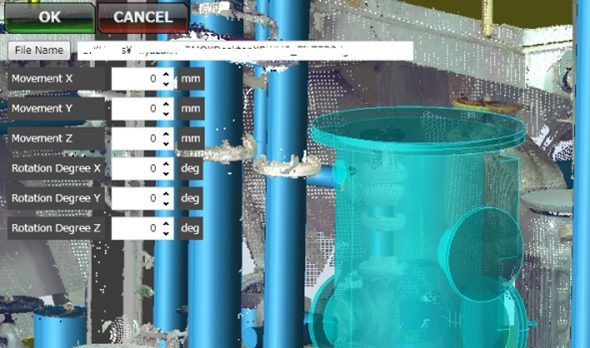In the following article, ClassNK explains how its ClassNK PEERLESS software is helping owners to consider the best BWMS solutions for their existing ships. Implementation of the Ballast Water Management (BWM) Convention means 40,000 vessels will need a Ballast Water Management System by their first renewal survey after September 2017.
More than 10 years after it was agreed at IMO council, the BWM Convention finally met its ratification criteria on 8 September 2016. Ratification by Finland pushed the scales past the required 35% of the world’s fleet by gross tonnage.
By first the time of their renewal survey after the Convention’s Entry into Force in September 2017, some 40,000 ships will need to install an approved BWMS. With limited retrofitting facilities available, and many of the systems in the market featuring common components, there is serious industry concern over whether all ships can be compliant in the timescale envisaged.
For the moment, though, shipping is by no means clear of regulatory complications. Questions remain on how the Convention can be implemented at all. Although 65 systems have already been type approved under the IMO’s G8 guidelines on performance, these same guidelines face revision at the IMO’s Marine Environment Protection Committee when it meets 24-28 October.
Meanwhile, the US Coast Guard has developed a separate and stricter type approvals process than that envisaged by IMO. As of August 2016 the USCG had granted around 10,000 extensions to the date of implementation, on the basis that no USCG type approved BWMS were available.

In this context, good arguments remain for a cautious approach when committing to new technology, especially if the treatment systems installed now later may not be approved for use in US waters.
However, given the timeline envisaged by IMO, owners would be advised to take the investment decisions that they can.
To help prepare the industry for the anticipated entry into force of the Convention, in November 2014 ClassNK announced the release of ClassNK-PEERLESS, a software package aimed squarely at BWMS decisions as they relate to existing ships. Working with Japanese 3D software provider Armonicos, the development for this application was coordinated by ClassNK, drawing on a research project involving The University of Tokyo, Monohakobi Technology Institute, NYK, MOL, “K” Line, Sasebo Heavy Industries, Sanwa Dock, and SEA Systems.
The principal installation issues faced in retrofitting new ballast water systems are that existing ships have not been built to accommodate space-hungry BWMS, especially in their engine rooms. The systems required feature large diameter piping and are complex, while space for settling tanks presents another particular challenge.
All this adds up to a situation that would usually require repeatedly sending in engineers to take and check measurements manually. Such an approach would mean the creation of 2D drawings to be cross-referenced with the vessel’s general arrangement plan, which takes time and costs money.
“Conventionally, the process is time-consuming and costly, and ship owners and operators need a better solution to help them plan whether retrofitting is the best option for their fleets, and which types of equipment will fit onboard,” says Hirofumi Takano, President of ClassNK Consulting Service Co., Ltd.
ClassNK-PEERLESS offers shipowners the opportunity to assess how to fit BWMS on their ships quickly, using 3D laser scanning to accurately measure available space automatically, without the time-consuming manual work.
“Scanning, as opposed to physical inspection inside ship spaces, is straightforward and safe.”, says Takano.
“It is also quick, involving just 10-20 two minute scans from different angles on each deck, and the whole process onboard takes less than a day.”
The software package converts the information gathered into cloud point data to create highly accurate 3D models of structure interiors within ClassNK-PEERLESS then exported to individual client 3D CAD applications, where machinery room arrangements can be conceived in a familiar format. A complete 3D model can be built in 1-2 days, compared to the 7-10 days it can take to build the same model by drawing on conventional inputs.
Shortening the modelling time in this way delivers a substantial cost reduction. Designers also only have to pay for what they use and, if the equipment to be installed is already decided on, onboard scanning is required only once.
“Despite the finalisation of the G8 guidelines and regardless of the USCG type-approval process developments, ships owners can take action now and assess if fitting BWMS on their existing ships is worthwhile,” adds Takano.
“At a time when the shipping market remains flat, they can decide in advance whether investing new money in older ships makes sense, or whether they ought to accelerate their scrapping plans.”
ClassNK-PEERLESS will allow owners to plan and troubleshoot the installation process quickly and help them understand which technology will fit into the space and lay out constraints identified. It helps to make these decisions for different ship types, across ships of different age and according to different trading routes.
Once the Convention enters into force, all eligible ships of 400 gross tonnage and above will have an International Ballast Water Management Certificate. ClassNK will also be carrying out initial surveys for the BWM Convention, subject to the authorization from administrations, and will issue the Certificates to ships. In developing ClassNK-PEERLESS, ClassNK and ClassNK Consulting Service Co., Ltd believe it is offering owners a ready means of being equally prepared for compliance.






























































